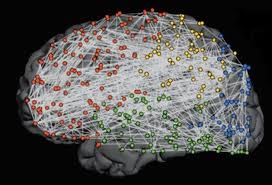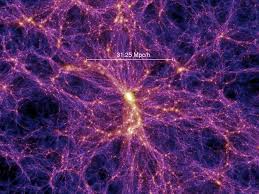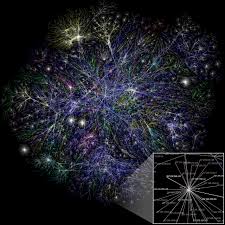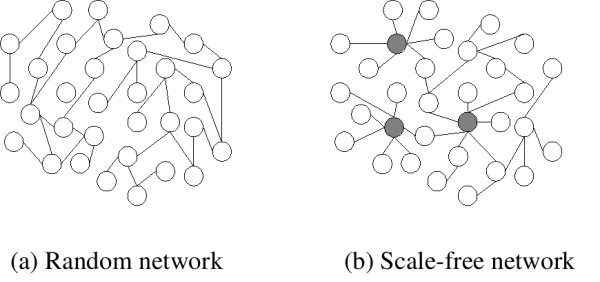On Monday the 17th of March, I attended another Digital Media lecture entitled ‘The Power of Networks’
In this lecture we spoke a lot about similarities, similarities between networks. Similarities happen between all sorts of things, people, art, cultures, events etc. In networks, the similarities are outstanding.
Our brain works on a network of different cells (I won’t go too much into detail about how the brain works, because I would be talking rubbish!), the internet also works on a network, as does the universe. This all seems normal, but when you actually look at these three networks side by side, you will be amazed.


 The brain being the top picture, the universe being the middle and the internet being the bottom, these three networks all look surprisingly similar. The brain and the internet work in almost exactly the same way, we have created a huge, artificial brain out there all with networks, makes sense to do so, but still seems strange.
The brain being the top picture, the universe being the middle and the internet being the bottom, these three networks all look surprisingly similar. The brain and the internet work in almost exactly the same way, we have created a huge, artificial brain out there all with networks, makes sense to do so, but still seems strange.
We are a reflection of the universe (a brain cell and the universe look the same) and the internet is a reflection of us (the internet also looks the same as the brain cell, and the universe).
History
Before we understood anything about neural networks or had the Internet to study we had maps and plans and ways of systematizing information. But the earliest instance of modern complex network theory can be found in the work of Ludwig von Bertalanffy. His General Systems Theory in the 1940s, was an attempt to map hard sciences, social sciences and humanities, technology and art. He employed a set of descriptive notions:
- System – the way it works
- Network – the structure it takes
- Metabolism – its evolution/organic nature
- Openness/closure – can it be impinged on from the outside?
These notions and concepts, in turn, were passed on to those taking a radical constructivist stance (scientific knowledge is constructed by scientists and not discovered from the world) and then lead tochaos theory (the butterfly effect – small differences in initial stimuli can have global effects) which in turn fed into cybernetics (the study of systems that have ‘goals’ and achieve them through feedback).
I quickly passed over whole chunks of academic and critical thinking in that last paragraph but I want to give an idea of the ‘linked’ nature of ideas as well as nature/physiology/brain etc..
Network Types
As network theory itself began to take shape in the latter part of the 20th century it was discovered that networks can take different shapes. The two distinct types being scale-free networks (which are the most pervasive) and random networks (less common and less stable).
The video below is a TED talk by Henry Markram – director of the Blue Brain Project – an attempt to create a synthetic brain by reverse-engineering the mammalian brain down to the molecular level.
What’s this got to do with digital media?
Until the advent of the Internet, network theories were concerned with the interfaces I’ve mentioned above. There was no example of a global network that might operate in the way the Internet does because it didn’t exist.
Early media theorists enthusiastically adopted McLuhan’s concept of media – perhaps because they’d rather have McLuhan than the cybernetics model (which is more rooted in the behaviourist theories). McLuhan predicted the networked connectivity of Internet in the 1960s by the way. However, McLuhan’s assumption that “the medium is the message” and that machines might have their own agenda meant that the media theorists would be grappling with problems that went beyond behaviourism. Behaviourists believe that psychologists & (social) scientists should only concern themselves with ‘observable behaviour’ and avoid theorising about what happens inside someone’s mind (in terms of their beliefs or thought processes).
A photograph is distribution of information, the information being the content within the photograph. But the photograph its self, the actual artefact is more important. No photograph in the world is important of the fact that we can do it, the fact that we can take the photograph. The philosophy of photography is much more important than any photography anyone will ever take.
ARTIFICIAL INTELLIGENCE?
The bods at Google have realised that the way the human brain is wired is uncannily similar to the way the Internet has evolved and they are trying to exploit this understanding to make the Internet even more like our brains.
It can’t be a coincidence that computer systems mimic natural systems that in turn look like our brains and that in turn are a mirror image of the whole universe. Everything is made out of the same stuff after all – but it still fascinates me how every new ‘evolution’ digital or biological happens in the same way. And that the in the evolution of the Internet, we have perhaps, unwittingly, created an Artificial Intelligence in our own image.
The seeking, connection-making imperative that underpins the way our brains work (neurons and synapses) is reflected in our digital structures and might explain why we seem to be hard-wired to constantly seek out new connections online, just as we are hard wired to fill in gaps in our perception and create meaning and narrative from the world around us. And in this connected digital world we are somehow striving – on the Internet to make the ultimate digital brain that does everything our biological brain can do . . . and more.
We have made a great big fat brain and we feed it with information all the time, every day.
RESPONSE:
This lecture taught me a lot about how people, places and things are linked together, no one in this planet is more than six degrees of separation apart, it makes me think how close we all are as a population. I’m only six people away from knowing Barack Obama, or even someone who has distanced themselves form the world, maybe someone in a tribe. Everyone and everything is linked by networks. Since we as humans decided to create one huge, artificial brain which connects billions of people and harbours endless information, we have been much more contactable and networkable.
When we were talking about the distribution of information in relation to photography, it made me think about how the medium we use to distribute information is much more important than the information it’s self. Like i previously explained, a picture would be no where near as valuable if someone didn’t take it, if the picture was just there. The fact that we can take the picture and that this ability exists is the important thing. The same goes for the internet, and the brain, and the universe
